The Cartoon Portal

A cartoon is a type of visual art that is typically drawn, frequently animated, in an unrealistic or semi-realistic style. The specific meaning has evolved, but the modern usage usually refers to either: an image or series of images intended for satire, caricature, or humor; or a motion picture that relies on a sequence of illustrations for its animation. Someone who creates cartoons in the first sense is called a cartoonist, and in the second sense they are usually called an animator.
The concept originated in the Middle Ages, and first described a preparatory drawing for a piece of art, such as a painting, fresco, tapestry, or stained glass window. In the 19th century, beginning in Punch magazine in 1843, cartoon came to refer – ironically at first – to humorous artworks in magazines and newspapers. Then it also was used for political cartoons and comic strips. When the medium developed, in the early 20th century, it began to refer to animated films that resembled print cartoons. (Full article...)

In print media, a cartoon is a drawing or series of drawings, usually humorous in intent. This usage dates from 1843, when Punch magazine applied the term to satirical drawings in its pages,[1] particularly sketches by John Leech.[2] The first of these parodied the preparatory cartoons for grand historical frescoes in the then-new Palace of Westminster in London.[3]

Selected article -
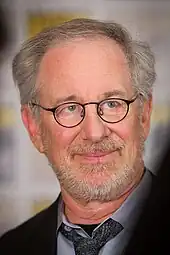
Steven Spielberg Presents Animaniacs is an American animated television series, distributed by Warner Bros. and produced by Amblin Entertainment. The cartoon was the second animated series produced by the collaboration of Steven Spielberg (pictured) and Warner Bros. Animation during the animation renaissance of the late 1980s and early 1990s. The studio's first series, Tiny Toon Adventures, was a success among younger viewers, and a series that attracted a sizable number of adult viewers. The Animaniacs writers and animators, led by senior producer Tom Ruegger, used the experience gained from the previous series to create new animated characters that were cast in the mold of Chuck Jones and Tex Avery's creations. Animaniacs first aired on "FOX Kids" from 1993 until 1995 and later appeared on The WB from 1995 to 1998 as part of its "Kids' WB" afternoon programming block. The series had a total of 99 episodes and one film, titled Wakko's Wish. Like other animated series, it continued to appear on television through syndication long after its original airdate.
Selected character -
Captain Marvel is a comic book superhero, originally published by Fawcett Comics and now owned by DC Comics. Created in 1939 by artist C.C. Beck and writer Bill Parker, the character first appeared in Whiz Comics #2 (Feb, 1940). With a premise that taps into adolescent fantasy, Captain Marvel is the alter ego of Billy Batson, a youth who works as a radio news reporter and was chosen to be a champion of good by the wizard Shazam. Whenever Billy speaks the wizard's name, he is instantly struck by a magic lightning bolt that transforms him into an adult superhero empowered with the abilities of six mythological figures. Several friends and family members, most notably Marvel Family cohorts Mary Marvel and Captain Marvel, Jr., can share Billy's power and become "Marvels" themselves. Hailed as "The World's Mightiest Mortal" in his adventures (and nicknamed "The Big Red Cheese" by archvillain Doctor Sivana, an epithet adopted by fans as a nickname for their hero), Captain Marvel was, based on sales, the most popular superhero of the 1940s, since the Captain Marvel Adventures comic book series sold more copies than Superman and other competing superhero books during the mid-1940s. Captain Marvel was also the first superhero to be adapted into film in 1941 (The Adventures of Captain Marvel). Fawcett ceased publishing Captain Marvel-related comics in 1953, dure in part to a copyright infringement suit from DC Comics alleging that Captain Marvel was an illegal infringement of Superman.
Did you know... -
- ...that 1999's Scooby-Doo! Mystery of the Fun Park Phantom was the first commercial Scooby-Doo computer game for the Windows platform?
- ...that the Young Justice episode "Independence Day" introduces a younger version of the DC Universe?
- ...that Friz Freleng's 1937 cartoon Clean Pastures narrowly evaded Hollywood Production Code censors, before being removed from distribution by United Artists in 1968?
- ...that The World of Strawberry Shortcake, the first television special to feature American Greetings' popular character, was rejected by the major U.S. networks and premiered in syndication instead?
Selected list -
The episodes of The Bellflower Bunnies, a children's animated series based on the Beechwood Bunny Tales books by Geneviève Huriet, Amélie Sarn and Loïc Jouannigot. It debuted on TF1, a French television network, on 24 December 2001. The series is written by Valérie Baranski, and produced by Patricia Robert. The show centres on the adventures and exploits of the Bellflower family, a clan of seven rabbits who live in Beechwood Grove. The two adults in the family, Papa Bramble and Aunt Zinnia, take care of their five children: Periwinkle, Poppy, Mistletoe, Dandelion and Violette. The series has also been broadcast on CBC Television and TFO in Canada, KI.KA in Germany, Portugal's RTP in the Azores, and in several other countries. The show has fifty-two episodes: four in the first season, twenty-two in the second, and twenty-six in the third. In the entire series, thirteen are based directly on installments in Beechwood Bunny Tales, published by Milan Presse of France and Gareth Stevens in the United States; the rest are based on scripts by Valérie Baranski. Distributors in Europe, North America, and South Korea have released DVDs of the first two seasons.
General images -
Selected biography -

Billy West (born April 16, 1950) is an American voice actor. Born in Detroit but raised in the Roslindale neighborhood of Boston, Massachusetts, Billy launched his career in the early 1980s performing daily comedic routines on Boston's WBCN. He left the radio station to work on the short-lived revival of Beany and Cecil. He was also a writer and castmember on The Howard Stern Show during the early to mid 1990s, where he gained nationwide fame with his impersonations of Larry Fine and late Cincinnati Reds owner Marge Schott. West is best known for his voice-work on Ren & Stimpy, Doug and Futurama. His favorite characters are Philip J. Fry (Futurama) and Stimpy (Ren and Stimpy), both of which he originated. West's most notable film work was in Space Jam (1996) providing the voice of both Bugs Bunny and Elmer Fudd. He has provided the same voices for other Looney Tunes films and video games. West has been very outspoken over his displeasure about the influx of movie star actors providing voice-over for films and major shows. As well as a voice artist, West is also a guitarist and singer-songwriter with a band called Billy West and The Grief Counselors.
Subcategories

WikiProjects
- Main projects
- Arts • Animation • Comics • Entertainment • Visual arts
- Related Projects
- Anime and manga • Biography • Film • Fictional characters • Media franchises • Music • Television • Video games
Selected quote -
Topics
- Comic book
- Comic strip
- Digital comics
- Graphic novel
- Mobile comic
- Motion comics
- Trade paperback
- Webcomic
- Animator
- Animation director
- Animation studios
- Animation film festivals
- Feature-length films
- Short films
- Television series
- Computer-animated films
- Stop-motion films
- Traditional animation
- Limited animation
- Rotoscoping
- Stop Motion
- Clay
- Cutout
- Graphic
- Model
- Object
- Pixilation
- Puppetoon
- Computer animation
- Flash animation
- PowerPoint animation
- SVG animation
- Cel-shaded animation
- Crowd simulation
- Morph target animation
- Motion capture
- Non-photorealistic rendering
- Skeletal animation
Things you can do

- Requested articles: Fenwick (comics), Khimaera (comics), Mutant Underground Support Engine, Bruce J. Hawker, Marc Dacier, Hultrasson, Frankenstein Comics, Dave Johnson (comics), Paco Medina, Dappere Dodo, New Adventures of the Space Explorers, Habatales, Musical Box, Foo-Foo (TV series), Bonne nuit les petits, The Adventures of Lariat Sam, More...
- Images and photos needed: Request images that are needed from Wikipedia requested images of comics and animation to included in each articles.
- Stubs: Work on stubs in articles in Comics and Animation stubs.
- Infobox: Add infobox that are needed from Category:Comics articles without infoboxes and Category:Animation articles needing infoboxes in articles.
- Deletion sorting: Please see the collection of discussions on the deletion of articles related to comics and animation - compiled by WikiProject Deletion sorting
Related portals
Associated Wikimedia
The following Wikimedia Foundation sister projects provide more on this subject:
-
 Commons
Commons
Free media repository -
 Wikibooks
Wikibooks
Free textbooks and manuals -
 Wikidata
Wikidata
Free knowledge base -
 Wikinews
Wikinews
Free-content news -
 Wikiquote
Wikiquote
Collection of quotations -
 Wikisource
Wikisource
Free-content library -
 Wikiversity
Wikiversity
Free learning tools -
 Wiktionary
Wiktionary
Dictionary and thesaurus
More portals
-
 List of all portals
List of all portals -

-

-

-

-

-
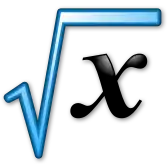
-

-

-

-
 Random portal
Random portal -
 WikiProject Portals
WikiProject Portals
Sources
- ↑ Punch.co.uk. "History of the Cartoon". Archived from the original on 2007-11-11. Retrieved 2007-11-01.
- ↑ Adler & Hill 2008, p. 30.
- ↑ "Substance and Shadow: Original Editorial Accompanying "Cartoon, No. I"". Victorian web.org. Retrieved 29 October 2023.
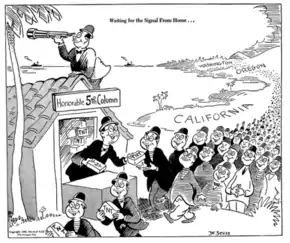
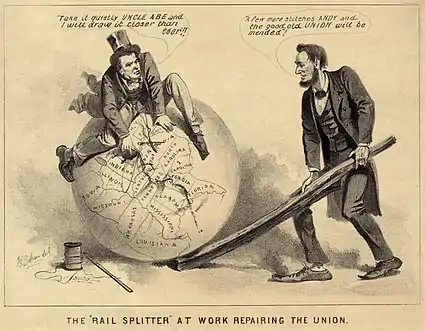
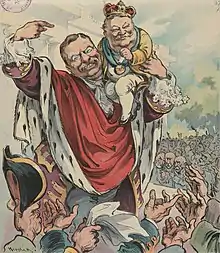


.jpg.webp)
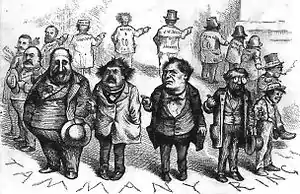
.jpg.webp)

_Ymir_2.png.webp)


